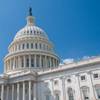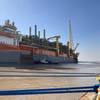Western Australia Curbs on Emissions
Western Australia’s Environmental Protection Authority (EPA) has announced tough new measures aimed at curbing greenhouse gas emissions from large projects.
This proposal could deter investment in the natural gas-rich state, a report in Reuters said quoting resource companies.
EPA said new projects, which could include fertiliser and power plants as well as liquefied natural gas (LNG) export sites, that generate more than 100,000 tonnes per year of carbon dioxide would be required to buy credits to offset their emissions in order to pass the authority's assessment process.
"The Environmental Factor Guidance – Greenhouse Gas Emissions and EPA Technical Guidance – Mitigating Greenhouse Gas Emissions, will help proponents of significant proposals in the State prepare for an environmental assessment by the EPA," said a statement from the government body.
The revised guidelines outline the information required from proponents and how it may be considered by the EPA in its environmental impact assessment. It also sets a clear threshold for when greenhouse gas emissions from proposals will be considered by the EPA, and what mitigation measures will likely be required.
EPA Chair Dr Tom Hatton said while the EPA Board recognised the lead role of the Commonwealth Government in relation to Australia’s international obligations on reducing emissions it notes there is a need to clarify and provide greater certainty in the EPA’s consideration of greenhouse gas emissions.
“Over the past two decades the EPA has recommended greenhouse gas abatement measures for around 40 proposals however more needs to be done to limit global warming, consistent with the Paris Agreement,” Dr Hatton said.
“The revised guidance released today clarifies what is required from proponents of significant proposals in the State, to avoid, reduce and offset their impacts and includes a more stringent approach to offsets.
“In the revised guidance the EPA has noted its intention to recommend offsets for proposals with direct emissions above 100,000 tonnes of carbon dioxide equivalent per annum.”
The EPA periodically reviews its guidance documents for environmental impact assessments and has consulted the EPA Stakeholder Reference Group (made up of industry, local government and conservation organisations) in developing its updated guidance.
These guidelines are not statutory, but serve to inform proponents as to the kinds of information they may be required to provide to the EPA during the assessment process. EPA advice and recommendations are considered by Government in authorising major developments in Western Australia.













